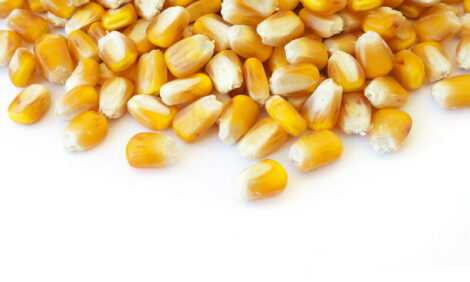



Effect of Starter Feeding Regimen on Variability in Bodyweight and Performance in the Nursery
By Denise Beaulieu, John Patience, Ruurd Zijlstra and Ryan Mohr, Prairie Swine Centre - Variability in growth and performance is a concern to pork producers due to the associated negative impact on revenues and expenditures. This experiment was designed to determine the effect of starter program on the variability in animal weights at nursery exit.
Summary
Treatments consisted of 4 starter programs, formulated and fed according to manufacturers’ specifications from weaning (d 0) to nursery exit (d 50). Overall ADG was similar between programs, however, the ADFI differed thus, feed efficiency was affected by the program used. Variability in pig growth, determined as the coefficient of variation, was not affected by starter program. This was true regardless of the starting weight of the group of pigs. Therefore, although performance may be affected slightly by the use of a specific starter program, the change in performance is uniform across a group; and the variability in body weight at nursery exit will not be affected.
Introduction
Variability in growth and performance is a concern to pork producers due to the associated negative impact on revenues and expenditures. The challenge of reducing the impact of variability on pork production is a serious one and two options are available. The first is to reduce variability and the second is to manage it. If variability is considered to be excessive the implementation of management practices to reduce it will be a reasonable approach.
The starter program has the potential to influence the relative growth of individual pigs within a group by allowing the smaller and/or younger pigs to excel relative to the older and/or larger contemporaries. Variability will be reduced if the feeding regimen allows the smaller pigs to “catch-up” or meet the performance of the larger animals in their cohort. It is recognized that the subject of nursery diet impact on variability is complex; determining whether a feeding program can reduce the impact of variability was considered a first step.
Experimental Procedures
A total of 560 pigs were used in this experiment. This represented all the available pigs from two consecutive weeks of weaning at PSC Elstow Research Farm. The only pigs excluded from the experiment were those deemed to be suffering from an obvious medical or physical problem. The experimental group represents a typical and complete weaning group. Animals were blocked into one of 4 weight groups. The treatments consisted of 4 commercial programs currently in use in Western Canada. The feeding programs were fed according to the manufacturers’ directions. The only restriction on the program was the medication, all diets were required to include LS20 at the recommended level.
Piglets were weighed individually when they were placed on test (d0) and on d4, d7, d13, d20, d34 and d50 (nursery exit). The CV was computed within a pen and analyzed as a variable across pens. To ensure confidentiality of participating companies, the performance data from one company was arbitrarily assigned a value of 100, and the data from the other companies is expressed relative to this. Significance was declared at the P < 0.05 level.
Results and Discussion
Starter program had a modest effect on performance (Table 1). However, when examined within specific phases (data not shown), no specific program outperformed the others. There were no starter program by weight group interactions, meaning that a starter program did not elicit an improvement within specific weight groups. Feed cost per pig or per kg of gain did differ between feeding program. Feed costs were based on information provided by the collaborating feed companies and was intended to reflect the price charged to a customer for this program.
As mentioned above, the objective of this experiment was to determine if differences exist among commercial starter programs in terms of their impact on variability at nursery exit (not to determine the “best” commercial starter program, nor examine specific nutrients which impact pig growth during the nursery phase). Although weight group had an effect on CV at nursery exit, starter program had no effect on uniformity. Moreover, there were no interactions of starter program by weight group, implying that within a specific weight group, no starter program consistently improved uniformity.
Implications
Within every weaning group there are some very lightweight pigs. Uniformity at nursery exit will be improved if we can specifically increase the growth rate of these pigs. The effect of starter program was not specific for any weight group, and therefore will not affect overall variability.
Acknowledgements
The authors acknowledge with gratitude the collaboration of the participating feed companies in Western Canada. Strategic program funding is provided to the Prairie Swine Centre by Sask. Pork, Alberta Pork, the Manitoba Pork Council and the Sask. Ag. Dev. Fund.

(a) calculated from untransformed data (b) significant effect due to treatment (P<0.05)

(a) significant effect due to treatment (P<0.05)

(a) calculated from untransformed data (b) calculated from pen data, averaged for each treatment. The overall CV for each nursery room averaged 17.8% at d 0 and 12.6% at d 50.

(a) calculated from pen data, averaged for each treatment. The overall CV for each nursery room averaged 17.8% at d 0 and 12.6% at d 50.
(b) significant effect due to weight group (P<0.05)
Source: Prairie Swine Centre - September 2004








